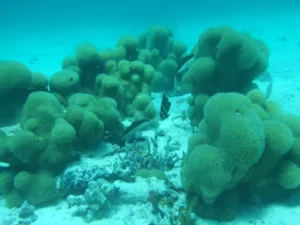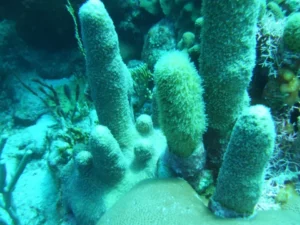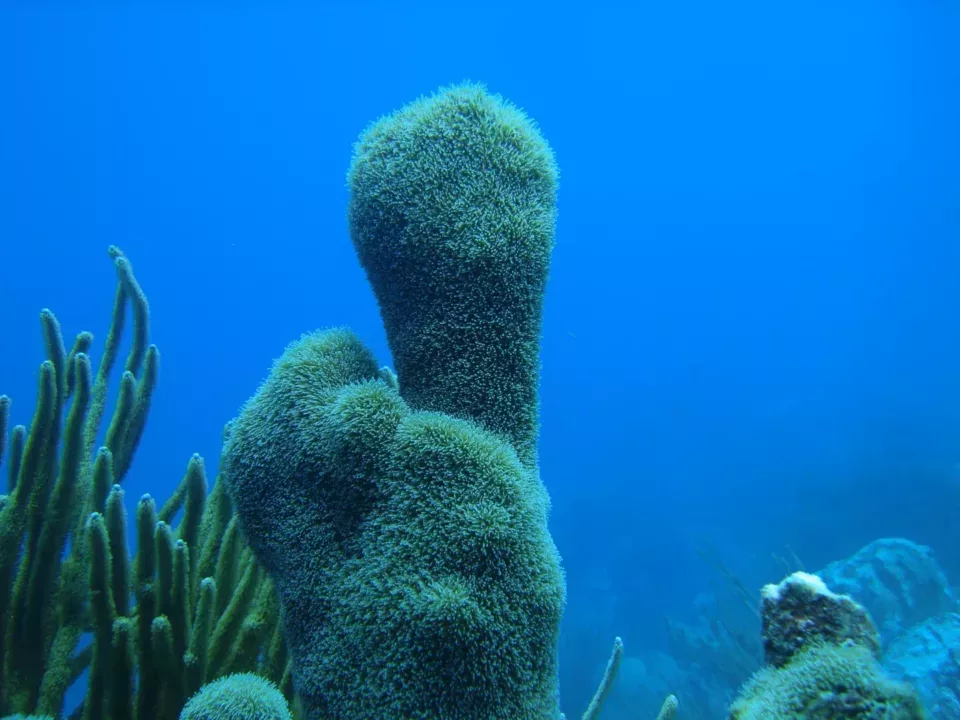Montreal, Canada, 9 December 2022 – Today’s update to the IUCN Red List of Threatened Species™ highlights a barrage of threats affecting marine species, including illegal and unsustainable fishing, pollution, climate change and disease. Populations of dugongs – large herbivorous marine mammals – and 44% of all abalone shellfish species enter the IUCN Red List as threatened with extinction; the pillar coral has deteriorated to Critically Endangered due to accumulated pressures.
The IUCN Red List now includes 150,388 species, of which 42,108 are threatened with extinction. Over 1,550 of the 17,903 marine animals and plants assessed are at risk of extinction, with climate change impacting at least 41% of threatened marine species.

“Today’s IUCN Red List update reveals a perfect storm of unsustainable human activity decimating marine life around the globe. As the world looks to the ongoing UN biodiversity conference to set the course for nature recovery, we simply cannot afford to fail,” said Dr Bruno Oberle, IUCN Director General. “We urgently need to address the linked climate and biodiversity crises, with profound changes to our economic systems, or we risk losing the crucial benefits the oceans provide us with.”
Abalone species are sold as some of the world’s most expensive seafood, with unsustainable extraction and poaching primary threats compounded by climate change, disease and pollution. Twenty of the world’s 54 abalone species are now threatened with extinction, according to the first global Red List assessment of these species.
In South Africa, poaching by criminal networks, many connected to the international drugs trade, have devastated populations of the Endangered perlemoen abalone (Haliotis midae). Increasingly frequent and severe marine heatwaves have caused mass mortalities, killing 99% of Roe’s abalones (H. roei) in its most northerly reaches of Western Australia in 2011. Marine heatwaves have exacerbated abalone diseases worldwide, affecting the Critically Endangered black abalone (H. cracherodii) in California and Mexico, and the Vulnerable green ormer (H. tuberculata), found from the English Channel to Northwest Africa and the Mediterranean. Marine heatwaves also kill the algae that abalones depend on for food. Pollution from agricultural and industrial run-off cause harmful algal blooms, which have eliminated the Endangered Omani abalone (H. mariae), a commercial species found in the Arabian Peninsula, across half of its range. Toxins such as antifouling boat paint further deplete populations.
“Abalones reflect humanity’s disastrous guardianship of our oceans in microcosm: overfishing, pollution, disease, habitat loss, algal blooms, warming and acidification, to name but a few threats. They really are the canary in the coalmine,” said Dr Howard Peters, member of the IUCN SSC Mollusc Specialist Group and research associate at the University of York, UK, who led the abalone assessment. “The most immediate action people can take is to eat only farmed or sustainably sourced abalones. Enforcing fishery quotas and anti-poaching measures is also critical. However, we need to halt the changes to ocean chemistry and temperature to preserve marine life including abalone species over the long term.”
Dugong populations in East Africa and New Caledonia have entered the IUCN Red List as Critically Endangered and Endangered respectively; the species remains Vulnerable globally. There are now fewer than 250 mature individuals in East Africa and under 900 in New Caledonia. The primary threats are unintentional capture in fishing gear in East Africa and poaching in New Caledonia, and boat injuries in both locations. In East Africa, oil and gas exploration and production, bottom trawling, chemical pollution and unauthorised coastal development are damaging and destroying the seagrasses that dugongs depend on for food. The degradation and loss of seagrasses in New Caledonia is the result of agricultural run-off, pollution from nickel mining and coastal development, and damage from boat anchors. The impacts of climate change present a threat throughout the dugongs’ wide range.
“Strengthening community-led fisheries governance and expanding work opportunities beyond fishing are key in East Africa, where marine ecosystems are fundamental to people’s food security and livelihoods,” said Evan Trotzuk, who led the East Africa Red List assessment. “Further, the creation of additional conserved areas in areas where dugongs live, particularly around Bazaruto Archipelago National Park, would also empower local communities and other stakeholders to find, implement, and benefit from solutions that halt long-term declines in dugong abundance, as well as in seagrass extent and quality.”

The pillar coral (Dendrogyra cylindrus), found throughout the Caribbean from the Yucatan Peninsula and Florida to Trinidad and Tobago, has moved from Vulnerable to Critically Endangered on the IUCN Red List, after its population shrunk by over 80% across most of its range since 1990. The most urgent threat is Stony Coral Tissue Loss Disease, which has emerged in the past four years and is highly contagious, infecting between 90 and 100 metres of reef per day. Bleaching caused by increased sea surface temperatures and excess antibiotics, fertilisers and sewage running into the sea have weakened corals and made them more susceptible to disease. Overfishing around coral reefs has depleted the number of grazing fish, allowing algae to dominate and putting further pressure on corals.
“The pillar coral is just one of the 26 corals now listed as Critically Endangered in the Atlantic Ocean, where almost half of all corals are now at elevated risk of extinction due to climate change and other impacts,” said Dr Beth Polidoro Associate Professor at Arizona State University and Red List Coordinator for the IUCN SSC Coral Specialist Group. “These alarming results emphasise the urgency of global cooperation and action to address climate change impacts on ocean ecosystems.”
The IUCN Red List of Threatened Species™ (or The IUCN Red List) is an invaluable resource to guide conservation action and policy decisions. It is a health check for our planet – a Barometer of Life. It is the world’s most comprehensive information source on the global conservation status of plant, animal and fungi species. It is based on an objective system for assessing the risk of extinction of a species should no conservation action be taken.
Species are assigned to one of eight categories of threat based on whether they meet criteria linked to population trend, population size and structure and geographic range. Species listed as Critically Endangered, Endangered or Vulnerable are collectively described as ‘threatened’.
Source: IUCN Press Release – December 9, 2022

